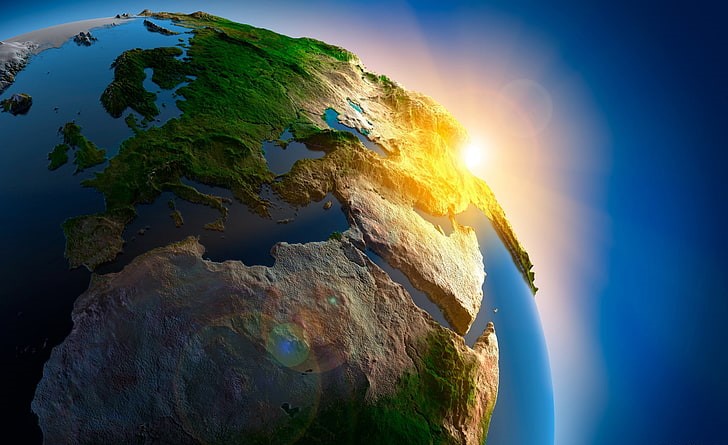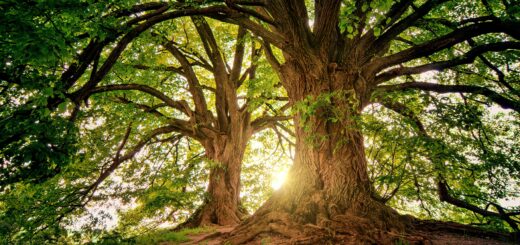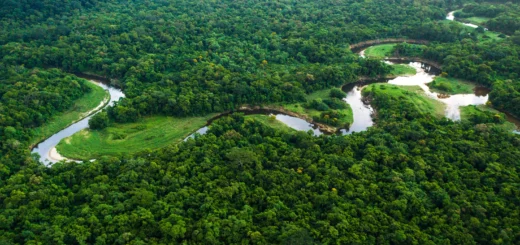Earth – A Cosmic Odyssey From The Big Bang To The Cradle Of Life

The story of Earth is an epic journey that unfolds over billions of years, shaped by cosmic forces and intricate processes. From the cataclysmic birth of the universe in the Big Bang to the emergence of life on our planet, every chapter in Earth’s history is a testament to the complexity and beauty of our cosmic home.
The Big Bang and Cosmic Evolution
Approximately 13.8 billion years ago, the universe burst into existence in an event known as the Big Bang. In a fraction of a second, space and time began, and the universe rapidly expanded, cooling and forming elementary particles. Over millions of years, these particles combined to create atoms, laying the foundation for the formation of galaxies, stars, and planetary systems.
Formation of Our Solar System
Around 4.6 billion years ago, a vast cloud of gas and dust in the Milky Way began to collapse under its gravitational pull. This process gave birth to our solar system, with the Sun at its center and a swirling disk of material that eventually coalesced into the planets, including Earth. This dynamic dance of gravitational forces shaped the orbits and characteristics of each celestial body.
Earth’s Early Days
As our planet took shape, it underwent a tumultuous period known as the Late Heavy Bombardment. During this time, asteroids and comets bombarded Earth, contributing to the formation of oceans and the emergence of a stable atmosphere. The primitive Earth gradually cooled, creating conditions suitable for the next chapter in its history.
The Origin of Life
The exact moment life emerged on Earth remains one of science’s greatest mysteries. However, evidence suggests that simple organic molecules formed in the oceans, and over millions of years, these molecules evolved into more complex structures. The first living organisms, likely single-celled microbes, marked the beginning of life’s incredible journey on our planet.
Evolution of Complex Life
Through the process of evolution by natural selection, life on Earth diversified and adapted to various environments. From simple marine organisms to complex multicellular life forms, Earth’s biosphere underwent remarkable transformations. The development of oxygen-producing photosynthetic organisms paved the way for the oxygen-rich atmosphere we breathe today.
Continental Drift and Plate Tectonics
Earth’s surface is dynamic, with continents drifting and colliding over geological time. The theory of plate tectonics explains these movements, highlighting the continuous reshaping of Earth’s crust. Mountains rise, oceans form, and earthquakes reshape landscapes, all driven by the convective currents within the Earth’s molten interior.
Human Civilization and Impact
In the relatively short span of human existence, our species has left an indelible mark on the planet. The development of agriculture, the rise of civilizations, and the industrial revolution have transformed Earth’s landscapes and ecosystems. As we stand at the intersection of science, technology, and environmental awareness, the impact of human activities on Earth’s delicate balance is a crucial consideration for the future.
Challenges and Conservation
In the 21st century, Earth faces unprecedented challenges, including climate change, loss of biodiversity, and environmental degradation. The importance of global conservation efforts, sustainable practices, and technological innovations has never been more critical as humanity grapples with safeguarding the health and resilience of our home planet.
Conclusion
In conclusion, Earth’s narrative is a tapestry woven with cosmic threads, from the explosive origins of the universe to the delicate dance of life on a habitable planet. Our responsibility as stewards of this unique celestial cradle is to ensure its continued vitality and the well-being of all its inhabitants. The story of Earth is ongoing, and our actions today shape the chapters that future generations will read in the cosmic odyssey of our remarkable home.








